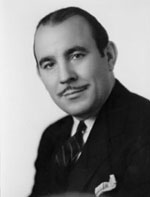
Appeal to the Supreme Court
Pressure was on the Washington Legislature to come up with a redistricting solution during the 1963
session, but a coalition in the House of Representatives complicated these efforts. The House was fractured
when six dissident Democrats joined forces with Republican leadership to oust Democratic powerhouse John L.
O'Brien from his position as Speaker of the House. The feud was ignited, in part, by O'Brien's refusal to
address the issue of redistricting in a manner that the dissidents considered acceptable. The new coalition
then went on to play a pivotal role in future redistricting proposals.
 Victor A. Meyers
Victor A. Meyers
Secretary of State, 1957-1965
It was unlikely in such a contentious political climate that legislators could come to a decision on a
partisan issue like redistricting, and indeed, the regular session closed without any agreement. Governor
Albert Rosellini immediately called a special session, but after 23 days, it, too, ended with no
redistricting plan. The courts then stepped in and in May of 1963 the District Court judges who ruled on
Thigpen v. Meyers found Washington's legislative districts null and void. The Secretary of State was
prohibited from conducting elections in the existing districts.
In July, the Secretary of State appealed Thigpen v. Meyers to the United States Supreme Court, and asked
the Justices to stay the District Court's ruling until a decision could be made on the appeal. A stay would
reinstate Washington's legislative districts, but without it, the legislators were faced with holding a
special session to establish new districts or possibly to force all candidates to run at-large. The Supreme
Court's answer did not come until the following year, so 1963 closed without legal legislative districts and
without a new redistricting plan.
|

|

